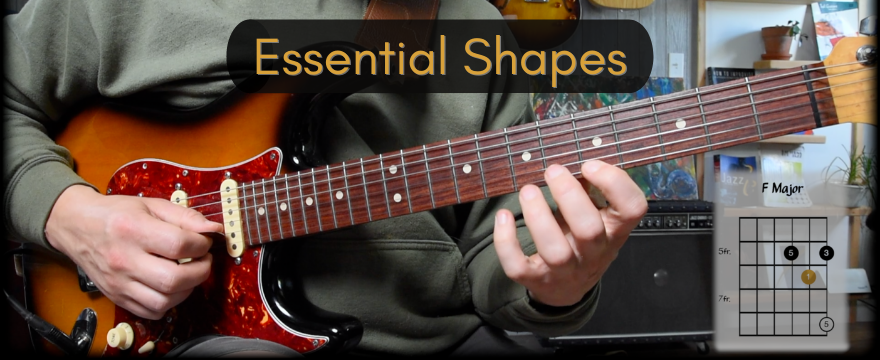Welcome to the first part of a short series diving into a single chord anchor shape. This triad arpeggio workout expands on an idea that I first presented in another lesson called A Different Way to Practice Scales.
You don’t need to clear that lesson first in order to get something out of this one though. Feel free to jump right in. This lesson will walk you through and help you practice the three types of triad arpeggios that are taken from the major scale.
If you like this, then keep an eye out for the next lesson which will be expanding on this concept. Next up is using these shapes through the full major scale.
A little background on this idea
I am currently moving through the process of developing a course. My intention going in was to translate challenging ideas into small, functional and easy to use shapes.
Essentially I wanted to package a large amount of knowledge in to the smallest conceptual space possible. It seemed as though it could help people get a better grip on how all the patterns of the guitar intertwine.
The questions kept repeating; what are the most primary shapes of the guitar? What are the most fundamental patterns from which my ability to improvise and discover new chords was derived?
I began to examine my own approach in my search for the easiest description. It needed to be a way to unite patterns of chords, scales and arpeggios. This is where the idea of “Chord Anchors” popped out at me.
My hypothesis emerges
It became clear to me that I was soloing by thinking of notes in relation to primary chord patterns. These chords were repeating all over the fretboard. In any position, on any chord, I could clearly see which of the primary shapes I was interacting with.
This perspective was already underlying my abilities, I just hadn’t articulated it yet. So, that ended up being the core essence of the course that I’ll be releasing soon. It also inspired me to create this series of free lessons devoted to this concept.
Chord Anchors are tools that you can use to improve your soloing as well as your general technique. They are moveable so it makes them utilizable anywhere on the fretboard. They also intertwine beautifully with each other to make chord progressions accessible anywhere.
In this lesson series I’m beginning with an important shape, which is a major triad in second inversion. This shape lies on the first three strings, using the “top down” approach. This triad arpeggio workout explores three primary chord types using this shape.
The course which expands on this concept is coming soon. If you want to get notified when it comes out just punch in your email and you’ll get updated. Until then, happy practicing!

Leave a Reply
You must be logged in to post a comment.